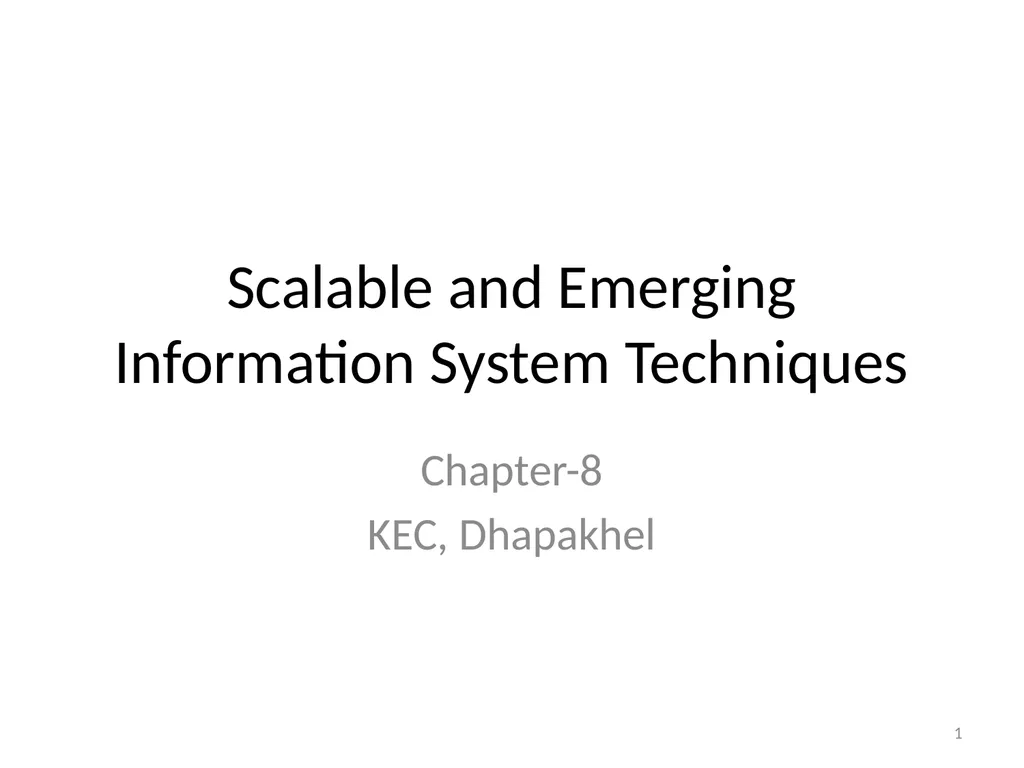
Scalable and Emerging Information System
Author: alexa-scheidler | Published: 2025-05-29
Description: Scalable and Emerging Information System Techniques Chapter-8 KEC, Dhapakhel 1 Big Data Big Data applies to information that cant be processed or analyzed using traditional processes or tools. 2 Techniques for Voluminous Data Cloud
Download Presentation
Download the PPT/PDF: Download
Transcript:
Loading transcript…